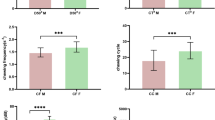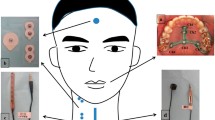Abstract
We conducted a case study with one volunteer and a recording setup to detect sounds induced by the actions: jaw clenching, tooth grinding, reading, eating, and drinking. The setup consisted of two in-ear microphones, where the left ear was semi-occluded with a commercially available earpiece and the right ear was occluded with a mouldable silicon ear piece. Investigations in the time and frequency domains demonstrated that for behaviors such as eating, tooth grinding, and reading, sounds could be recorded with both sensors. For jaw clenching, however, occluding the ear with a mouldable piece was necessary to enable its detection. This can be attributed to the fact that the mouldable ear piece sealed the ear canal and isolated it from the environment, resulting in a detectable change in pressure. In conclusion, our work suggests that detecting behaviors such as eating, grinding, reading with a semi-occluded ear is possible, whereas, behaviors such as clenching require the complete occlusion of the ear if the activity should be easily detectable. Nevertheless, the latter approach may limit real-world applicability because it hinders the hearing capabilities.
Elisabeth Wilhelm and Georg Rauter both authors contributed equally.
Access this chapter
Tax calculation will be finalised at checkout
Purchases are for personal use only
Similar content being viewed by others
References
Leng, S., Tan, R.S., Chai, K.T.C., Wang, C., Ghista, D., Zhong, L.: The electronic stethoscope. Biomed. Eng. Online 14, 66 (2015)
Seshadri, D.R., et al.: Wearable sensors for monitoring the physiological and biochemical profile of the athlete. NPJ Digital Med. 2, 72 (2019)
Schlüter, D.K., et al.: Use of acoustic emission to identify novel candidate biomarkers for knee osteoarthritis (OA). PloS One 14, e0223711 (2019)
Du, X., Allwood, G., Webberley, K.M., Inderjeeth, A.-J., Osseiran, A., Marshall, B.J.: Noninvasive diagnosis of irritable bowel syndrome via bowel sound features: proof of concept. Clin. Transl. Gastroenterol. 10, e00017 (2019)
Masè, M., Micarelli, A., Strapazzon, G.: Hearables: new perspectives and pitfalls of in-ear devices for physiological monitoring. a scoping review. Front. Physiol. 11, 568886 (2020)
Amft, O., Stäger, M., Lukowicz, P., Tröster, G.: Analysis of chewing sounds for dietary monitoring. In: Beigl, M., Intille, S., Rekimoto, J., Tokuda, H. (eds.) UbiComp 2005. LNCS, vol. 3660, pp. 56–72. Springer, Heidelberg (2005). https://doi.org/10.1007/11551201_4
Martin, A., Voix, J.: In-ear audio wearable: measurement of heart and breathing rates for health and safety monitoring. IEEE Trans. Biomed. Eng. 65(6), 1256–1263 (2018)
Lobbezoo, F., et al.: International consensus on the assessment of bruxism: report of a work in progress. J. Oral Rehabil. 45(11), 837–844 (2018)
Lavigne, G., Khoury, S., Abe, S., Yamaguchi, T., Raphael, K.: Bruxism physiology and pathology: an overview for clinicians. J. Oral Rehabil. 35(7), 476–494 (2008)
Päßler, S., Wolff, M., Fischer, W.-J.: Food intake monitoring: an acoustical approach to automated food intake activity detection and classification of consumed food. Physiol. Meas. 33, 1073–1093 (2012)
International Phonetic Association, & International Phonetic Association Staff.: Handbook of the International Phonetic Association: A Guide to the Use of the International Phonetic Alphabet. Cambridge University Press, Cambridge (1999)
Acknowledgement
We would like to express our gratitude for the generous financial support provided by the Werner Siemens Foundation. In addition, the author would like to thank Norbert Zenati member of CIAN at the Department of Biomedical Engineering, for his support with developing the graphical user interface.
Author information
Authors and Affiliations
Corresponding author
Editor information
Editors and Affiliations
Rights and permissions
Copyright information
© 2022 The Author(s), under exclusive license to Springer Nature Switzerland AG
About this paper
Cite this paper
Nahhas, M.K., Gerig, N., Türp, J.C., Cattin, P., Wilhelm, E., Rauter, G. (2022). Impact of Ear Occlusion on In-Ear Sounds Generated by Intra-oral Behaviors. In: Rauter, G., Carbone, G., Cattin, P.C., Zam, A., Pisla, D., Riener, R. (eds) New Trends in Medical and Service Robotics. MESROB 2021. Mechanisms and Machine Science, vol 106. Springer, Cham. https://doi.org/10.1007/978-3-030-76147-9_16
Download citation
DOI: https://doi.org/10.1007/978-3-030-76147-9_16
Published:
Publisher Name: Springer, Cham
Print ISBN: 978-3-030-76146-2
Online ISBN: 978-3-030-76147-9
eBook Packages: Intelligent Technologies and RoboticsIntelligent Technologies and Robotics (R0)




